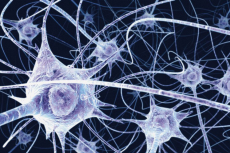
In the previous article we looked at how conceptions of the brain and the mind have changed across time, with various philosophers and early physicians disputing the relationship between the two. We ended in the 1600s with the ideas of Descartes, and now we jump forward 200 years to the 19th century, when the next major changes in the discipline arose. It was at this point that the neuron doctrine was formed, and this viewpoint is now the basis for our entire understanding of the mind in neuroscience.
In the 19th century, the first advances in microscopy were coming around, and this meant that scientists were able to look closer at brains. From their microscopic observations, they could start to see the more complex organisation of nerve cells within the nervous system. There was a much better understanding of biology by this point, and people understood the different tissue types and the concept of cells. However, once again, opinions were divided about the new knowledge. There were two popular beliefs about the structure of the nervous system, which were held by reticularists and cell theorists. The first group believed that the whole of the nervous system was one mass of tissue, with connected cells like most tissues in the body. The cell theorists, on the other hand, believed that the nerve cells in this system were distinct, separate, and were not fused together as normally was the case. The problem was that at the time, the microscopes available were relatively low magnification and resolution, so it was difficult to really tell what was going on.
Golgi, a well-known biologist, responsible for understanding a large amount of cell structure, was a reticularist, and believed at one point that he had found proof for his belief when he used silver nitrate to stain the cells. He observed that a nerve fibre may have an infinite number of connections, and that these connections could occur in many different places, and so inferred that they could not be individual cells, as they were each too dissimilar. Eventually though, Cajal invented new methods of staining cells and showed that where the dendrites of neurons ended, axons seemed to occur. These are the two sections of neurons which are the points at which an electrical current begin and end, so it makes sense that they would meet at certain points. With this evidence, Cajal proved the existence of separate cells within the nervous system and the neuron doctrine was formed.
It was around this point that the term neuron itself actually appeared, and Cajal managed to show how electricity was conducted through nerves, calculating the direction of conduction along nerve cells from his experiments. In the 1950s, electron microscopy was developed which was more magnified and sharper, meaning that Cajal’s belief could finally be proved beyond dispute. This showed that there always existed synapses between nerve cells, through which the nerves would communicate by some method, but they would not touch.
Now that the neuron doctrine was understood, people knew what the building blocks were for the system, but many wanted to know how the larger structure of the brain worked, and how our behaviour could be controlled by the brain, so they tried to map functions to specific areas. In our final article on the history of neuroscience, we’ll discover how this still on-going quest to map the brain has developed over time.
Image from: http://wileywitch.com/wp-content/uploads/2013/02/173_neurons.jpg

0 Comment:
Be the first one to comment on this article.